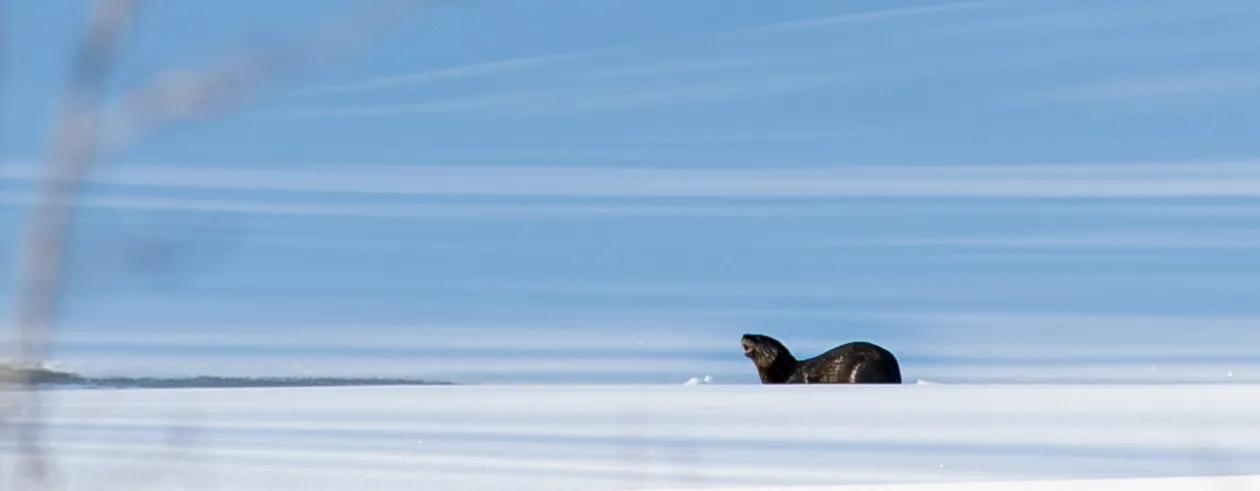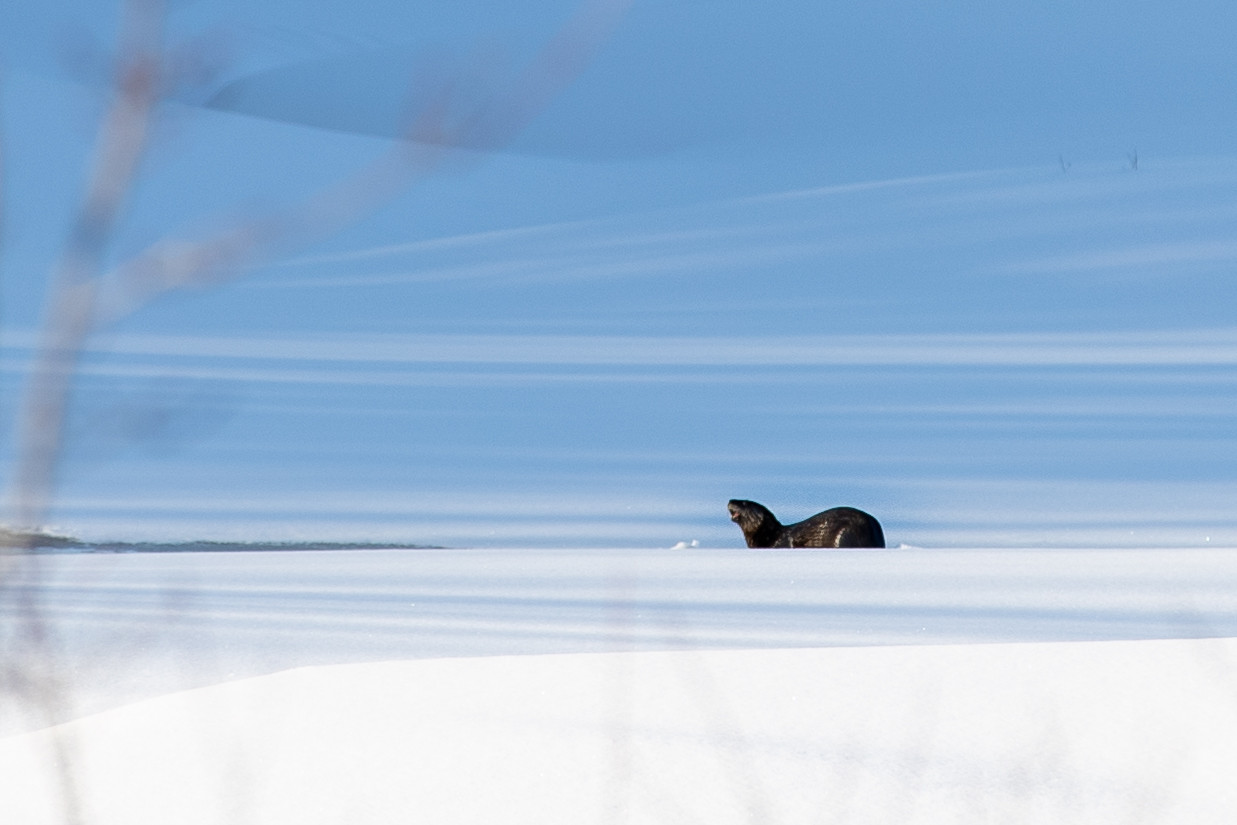
Year round, the Adirondacks — and Tupper Lake in particular — is a great place to live. There are scores of outdoor adventures, the local restaurants, bakeries, and taverns are full of great flavor, and the lodging is cozy. When you think of a great place to rest and stay warm during winter and spring adventures do you think of a motel, perhaps, or a cabin? You don’t think of a mossy, leaf-insulated den, do you?
In Tupper Lake, we’re incredibly lucky to be near The Wild Center, an interactive natural history museum that celebrates the Adirondack landscape and the plants, mammals, and amphibians that live here. Here, you can get up close to lively river otters, fascinating birds, waddling porcupines, and a host of turtles, frogs, fish, and insects. At The Wild Center you can observe all of this wildlife, and learn about it, too. We got to wondering, what do some of these animals do in the winter, in the wild? Mossy dens ahead!
River otter
One of the highlights of any visit to The Wild Center is always seeing the resident otters! It's great fun to watch these speedy mammals swim, snack, and snooze. We’re fortunate to be able to observe them up close, but the rare treat of spotting one (or two, or three) in the wild is unforgettably exciting.
River otters are numerous in Adirondack lakes, rivers, and streams, where they feed on crayfish, amphibians, reptiles, and fish. Fortunately, freezing water doesn't slow them down from a meal; otters simply spend more time feeding from rivers and streams.
Otters are semi-aquatic mammals that really seem to love being in the water. Winter doesn't change that at all, and in fact, many a river otter has been spotted having a splashy swim on a frigid day, rolling, diving, and even playfully wrestling with other otters. Sliding across the ice is another great way of playing and getting around. Icy water doesn't bother the otter because it has a specialized coat of fur made of two layers, including one that is essentially waterproof, as well as a clear second eyelid, making vision underwater easier even in the cold.
As for where they sleep in the winter, many river otters will find a nice den close to open water, such as an abandoned beaver lodge, to stay snug, dry, and warm. Other options are burrows or nooks in and even under fallen logs.
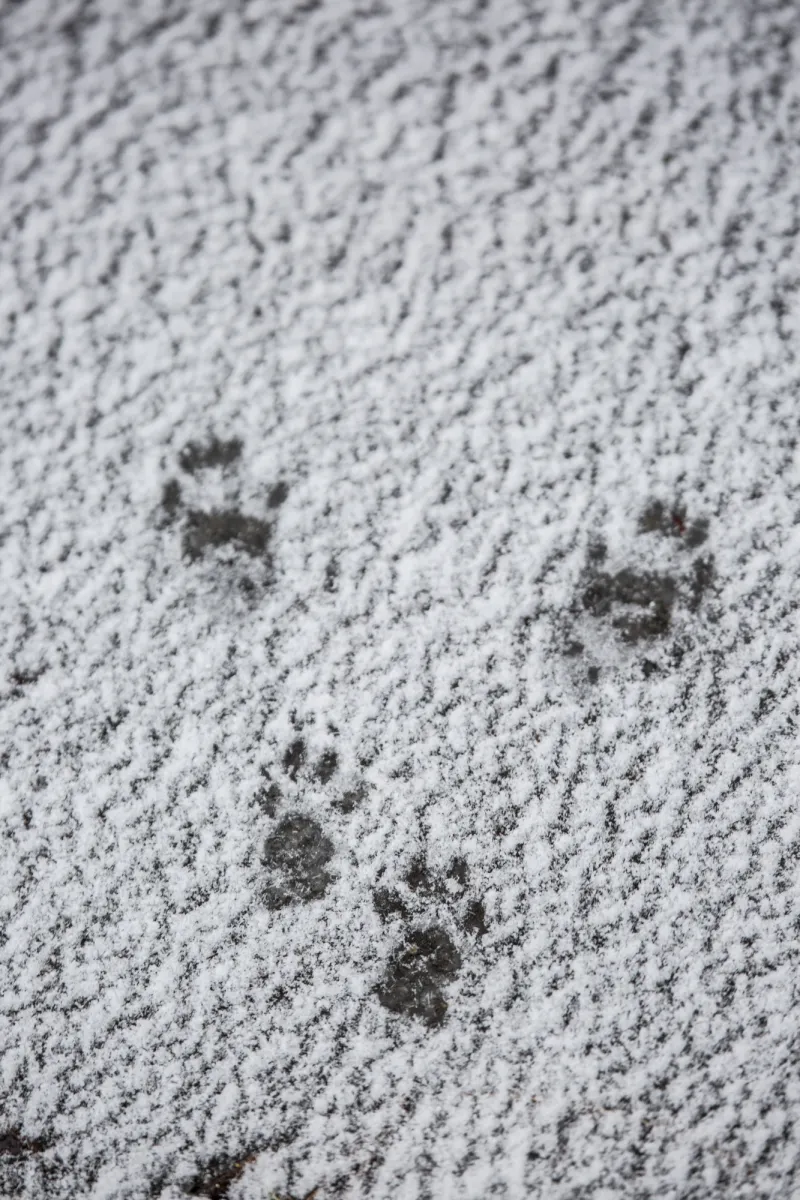
Porcupine
The Wild Center is home to not one, but two, delightful porcupines, offering a great opportunity to see more of animals that many of us misunderstand. More than just sharp quills, which come in handy in the wilderness, porcupines are actually fairly docile animals. The quills are a tool for self-defense!
You might think that porcupines, being members of the rodent order, hibernate in winter, tucking themselves into a nice, warm den and slowing down their bodies to "sleep" through the cold winter. I thought that's what they did, but I have learned that porcupines stay active in the winter, they just stay a bit closer to home. Unlike the elaborate dens built by animals like beavers, porcupines like to construct cozy nests in crevices in rocks, hollow logs, and other easy to access nooks.
Always good climbers, porcupines will climb trees in winter, just as they do in summer in order to find food. Porcupines love bark year-round; in winter, these short-legged animals have to push their way through snow, which can be tiring, so they eat in trees close to their dens. You might even see porcupine tracks in winter; if the snow is thick enough, it might look like a little trough made by a tiny plow!
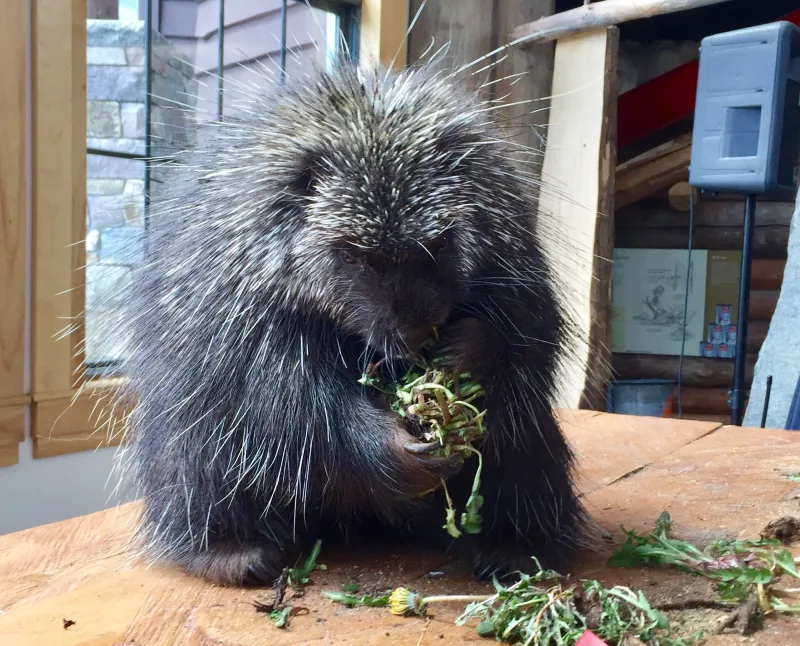
Amphibians and reptiles
Did you know that wood frogs have teeth? I didn't! This is the cool kind of info you can learn at The Wild Center, where amphibians such as wood frogs live a great life helping people like you and I learn more about the world around us. In the wild, wood frogs, like many other amphibians, have their own form of hibernation, which involves burying themselves in loose soil or under debris on the forest floor. They also freeze, although their bodies have adapted to produce a chemical that keeps their cells from dying, even while their hearts don't beat. In spring, the frogs "thaw out" and get busy with spring activities! Such tiny creatures, and yet so fascinating!
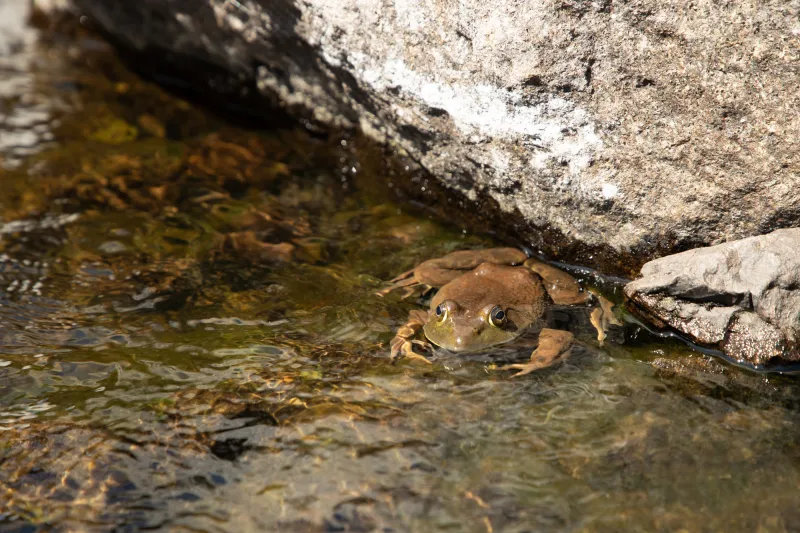
When you explore the exhibits at The Wild Center, you'll often see painted turtles basking under warm lamps, soaking up the nourishing warmth. A small reptile, the painted turtle, named for it's colorful markings, is the most abundant turtle native to North America. If you see a turtle in the wild in the Adirondacks, there's a good chance it will be this species! In winter, painted turtles survive by spending the whole season in the water, underneath the layers of ice that form on lakes and ponds. Their bodies have adapted to the cold by slowing down in this season, so that their bodies use up less energy at a time when it's important to conserve that energy.
Painted turtles continue to get oxygen by absorbing it through their skin and even changing the chemistry of their bodies! Just so you know, if you see one under the ice some winter, you can leave it right where it is. They know what they're doing!
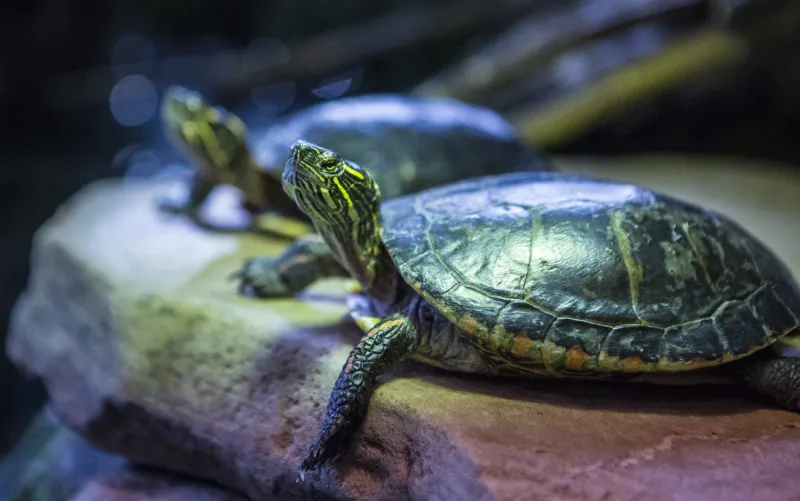
Want to learn more about the amazing, fascinating mammals, reptiles, and amphibians that live in the Adirondacks? Visit The Wild Center, which offers special behind-the-scenes tours, animal interactions, and more special encounters designed to help you fall even more in love with this special place than you already are. While you're here, adapt your own hibernation to a charming motel or cozy cottage. Local restaurants have great menus to dig into, but no bark; we save that for the porcupines!
